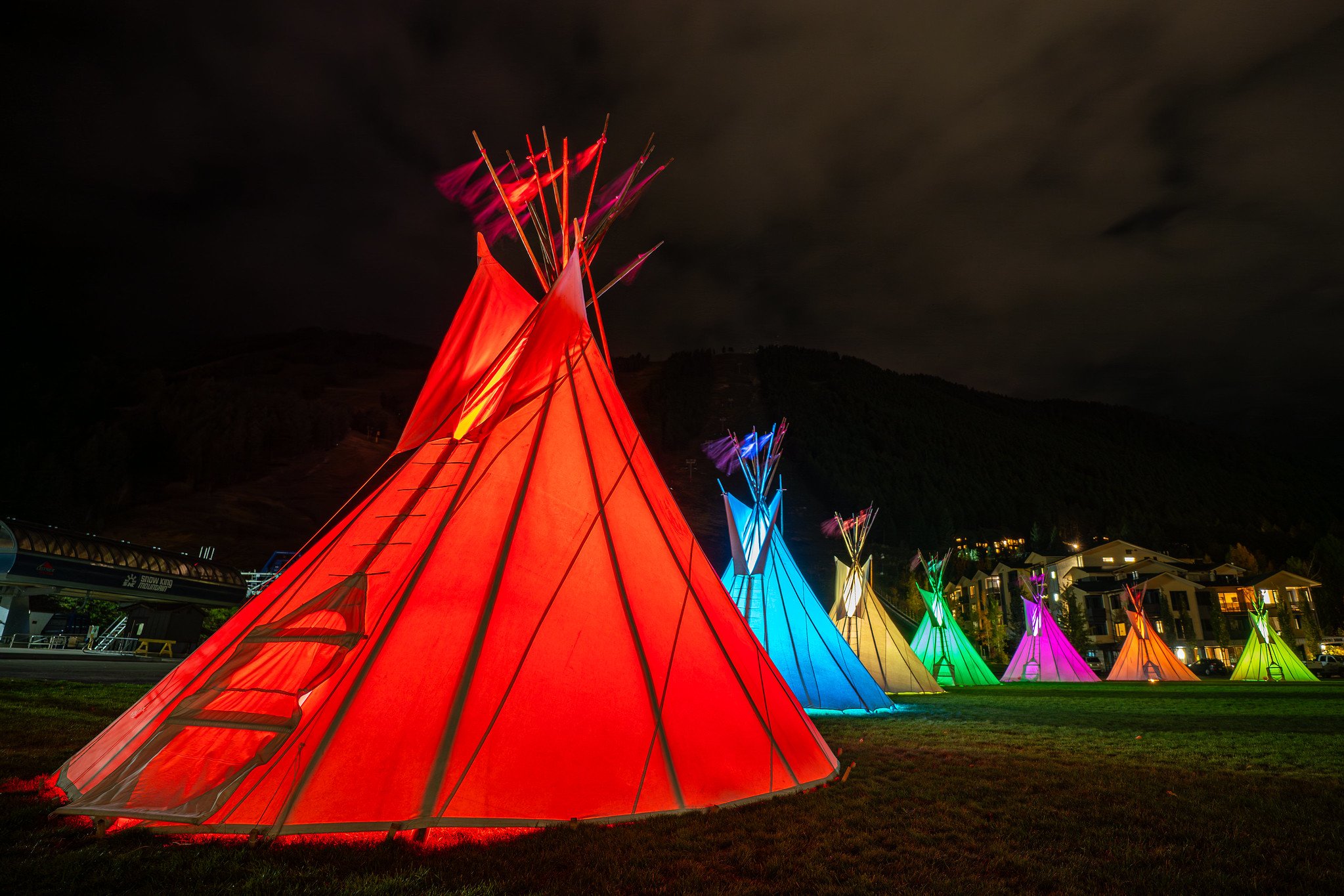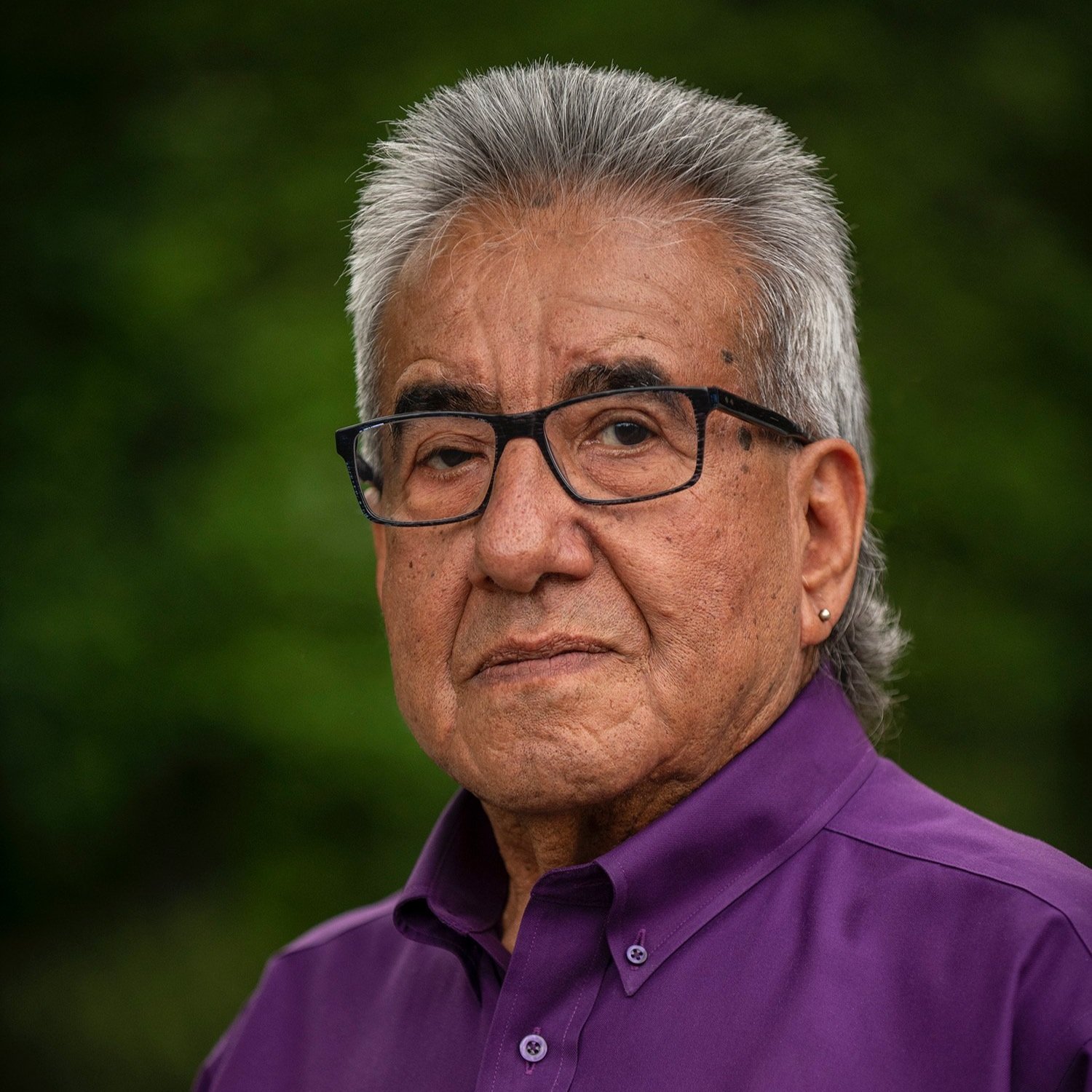Tribal Nations, agencies, and NGOs come together for Jackson Hole InterTribal Gathering
Over two brilliant fall days in October, almost 100 people came together in Jackson, Wyoming for the Jackson Hole InterTribal Gathering – an event that overwhelmingly met expectations. More than 14 Tribal Nations met with a host of federal agencies and non-governmental organizations to bring further discussion to the management of federal lands and how Indigenous values and beliefs can merge into stewardship of lands that were once aboriginal homelands to many Tribes and Bands.
Community members and Jackson Hole InterTribal Gathering attendees join hands for a round dance next to the soon-to-be-lit teepees. (Photo NPS/Adams)
This gathering was inspired by and served as a follow up to the Wind River Inter-Tribal Gathering, which was co-hosted by GYC and the Eastern Shoshone and Northern Arapaho Tribes in mid-2022. The Jackson Hole InterTribal Gathering brought together representatives with connections to the southern Greater Yellowstone Ecosystem and expanded on conversations around complex issues started at the first gathering.
Members of more than 14 Tribal Nations, the National Park Service, United States Forest Service, Bureau of Land Management, United States Fish and Wildlife Service, as well as the Wyoming Game and Fish Department, gathered for two days of talks centered around conservation, inclusion, and consultation. Eleven supporting nonprofits and educational institutions provided emphasis on the need for improving technical and scientific capacities of Tribes. Tribes were able to express concerns regarding “consultation” and the challenges encountered when dealing with several agencies with varying consultation and communication policies and strategies. Federal agencies stressed the need for clear points of contact and better coordination with the various Tribes with connections to their jurisdictions.
GYC’s Senior Wind River Conservation Associate Wes Martel speaks during a panel at the Jackson Hole InterTribal Gathering. (Photo NPS/Adams)
These frank and honest discussions paved the way for further deliberations as participants were appreciative of the opportunity to meet people in person, broaden connections, start to understand more fully the various inter-agency perspectives, and begin to work beyond boundaries.
Daytime discussions were followed by displays of beauty, community, and culture in a REMATRIATE performance by Patti Baldes and the Lighted Teepees Ceremony. REMATRIATE and the teepee raising brought almost 300 people to Phil Baux Park at the base of Snow King Mountain. It was great to have the very supportive presence of the Mayor of Jackson and several town councilors and their families at the event as well.
The Lighted Teepees Ceremony on October 4 brought almost 300 people to the base of Snow King Mountain. (Photo NPS/Adams)
Most in attendance expressed the need for these inter-Tribal gatherings to continue so that better collaboration and understanding may take place between all the involved parties. I know I look forward to gathering again soon.
If you would like to learn more about or support GYC’s work to enhance Tribal-federal partnerships, support inter-Tribal coordination, and our efforts to support Indigenous conservation priorities, visit our website.
– Wes Martel, Senior Wind River Conservation Associate (Eastern Shoshone)
The Greater Yellowstone Ecosystem is the land of 49+ Indigenous Tribes who maintain current and ancestral connections to the lands, waters, wildlife, plants, and more.




